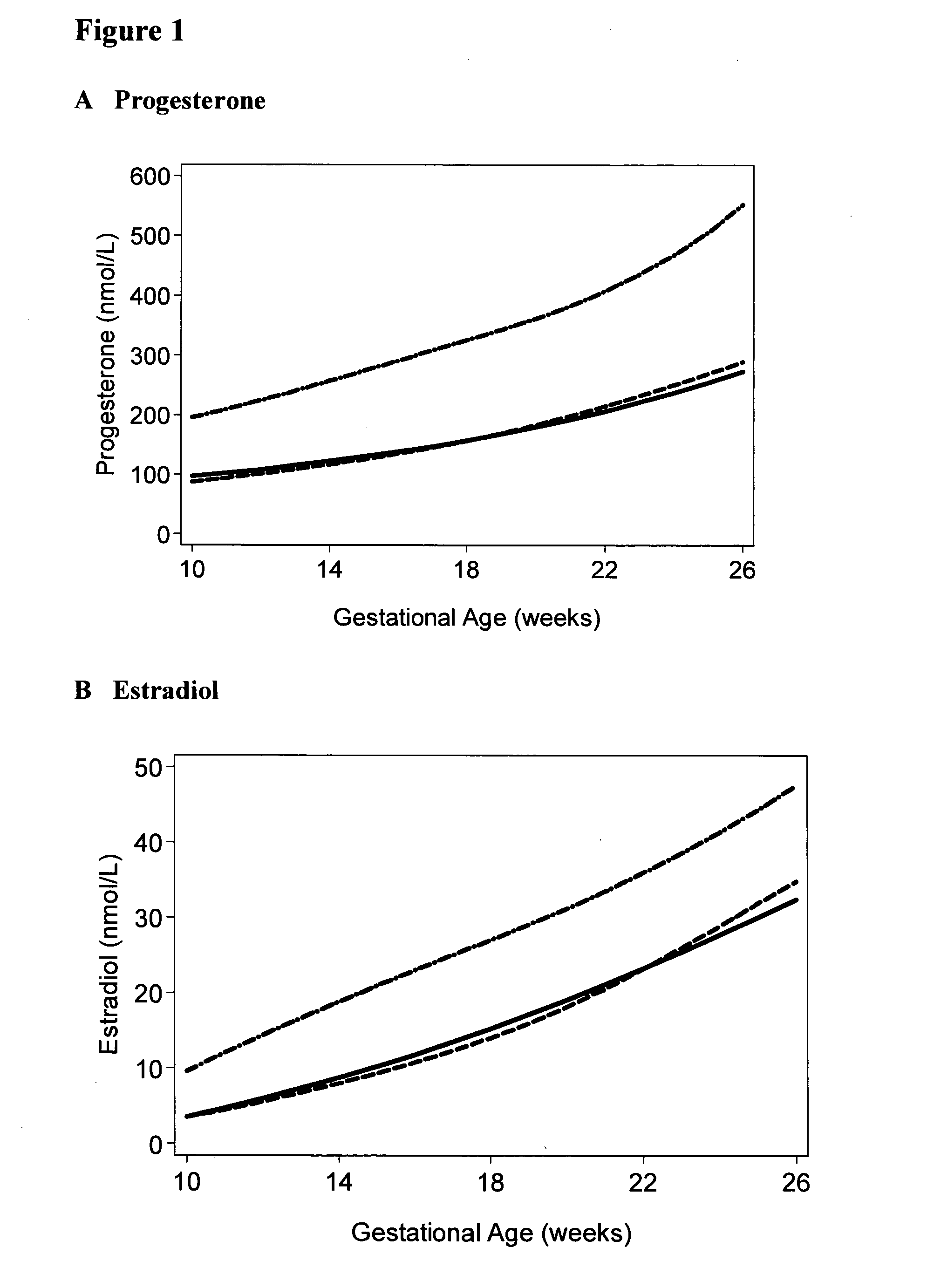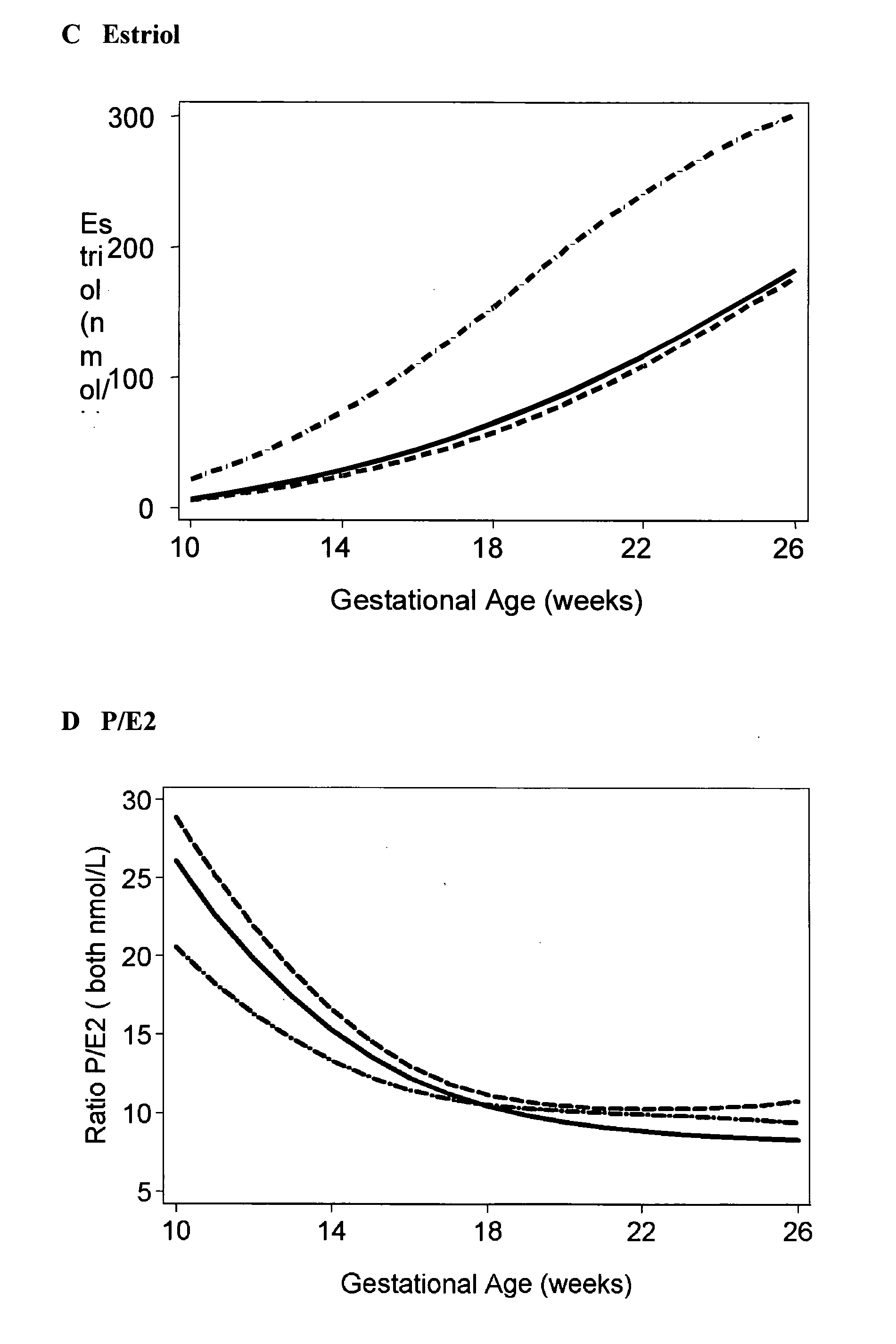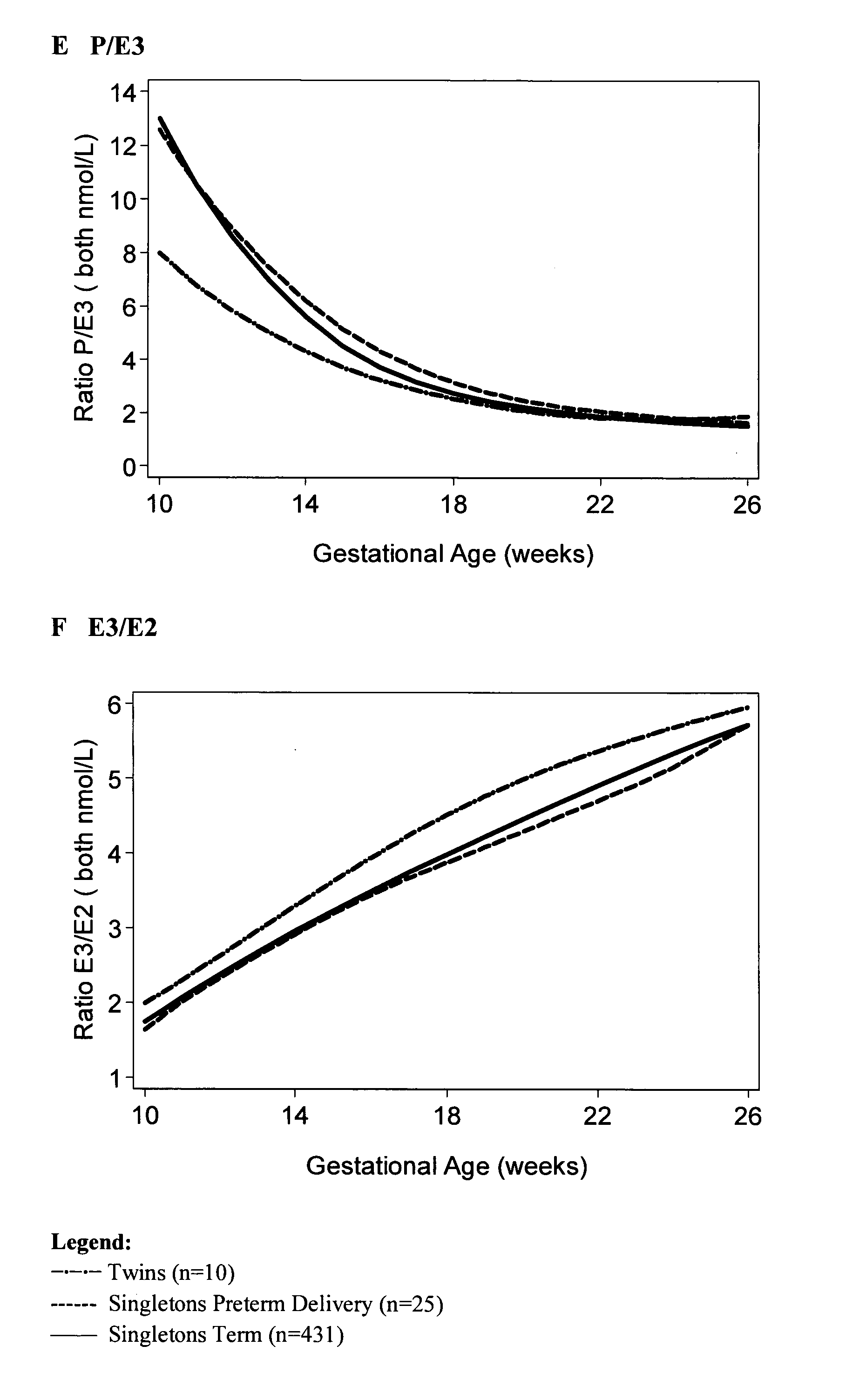Methods and Kits for Predicting the Onset of Labour
a technology for predicting the onset of labour and kits, which is applied in the direction of fluorescence/phosphorescence, instruments, material analysis, etc., can solve the problems of limited value and achieve the effects of increasing the ratio of estriol, and increasing the risk of onset of labour
- Summary
- Abstract
- Description
- Claims
- Application Information
AI Technical Summary
Benefits of technology
Problems solved by technology
Method used
Image
Examples
example 1
[0084]Five hundred unselected pregnant women provided 2-9 plasma samples from 7 weeks of pregnancy to labour. Samples were assayed for progesterone, estradiol and estriol. Results were used to form trajectories for each analyte. Notably samples were taken between the hours of 9 am and 5 pm when no dramatic diurnal variation in P, E2 and E3 occurs (Keirse 1990).
Study Design
[0085]The Human Ethics committee of the Hunter Area Health Service approved this study and all subjects provided written informed consent. A cohort of unselected subjects was recruited by research midwives at their first antenatal visit and followed to delivery at the John Hunter Hospital in Newcastle, Australia, during the period 2000-2004. Maternal blood samples were taken at approximately monthly intervals until and including sampling at the time of labour and just after delivery where possible. Visits to the ante-natal clinic were between 9 am and 5 pm. Gestational age was defined by an early ultrasound scan.
As...
example 2
Supplementary Curve Fitting Details Follow.
[0111]For P, E2 and E3, a test group of 6 normal subjects with 7 or more samples was used to examine the trajectory fit with various curve types and choose several candidate equations, which were then fitted to the whole group and a final choice of curve-type selected. Given that intra-assay CVs are similar percentages at low, medium and high levels, log-transforming and using a weighting of I provided a reasonable approach for regression considering that the range of levels for each pregnancy was extremely wide (from <100 to several thousand units in some cases). Initially, a range of equations of order 1 (i.e. degree I using a fractional polynomial approach Royston P. 1994; and Royston et al 1999) and a quadratic equation were tried; had none of these proved satisfactory because of the trajectory shapes, further equations of degree 2 would have been used. Log-transformed data were curve-fitted for each analyte and for each subject by non-...
PUM
 Login to View More
Login to View More Abstract
Description
Claims
Application Information
 Login to View More
Login to View More - R&D
- Intellectual Property
- Life Sciences
- Materials
- Tech Scout
- Unparalleled Data Quality
- Higher Quality Content
- 60% Fewer Hallucinations
Browse by: Latest US Patents, China's latest patents, Technical Efficacy Thesaurus, Application Domain, Technology Topic, Popular Technical Reports.
© 2025 PatSnap. All rights reserved.Legal|Privacy policy|Modern Slavery Act Transparency Statement|Sitemap|About US| Contact US: help@patsnap.com



